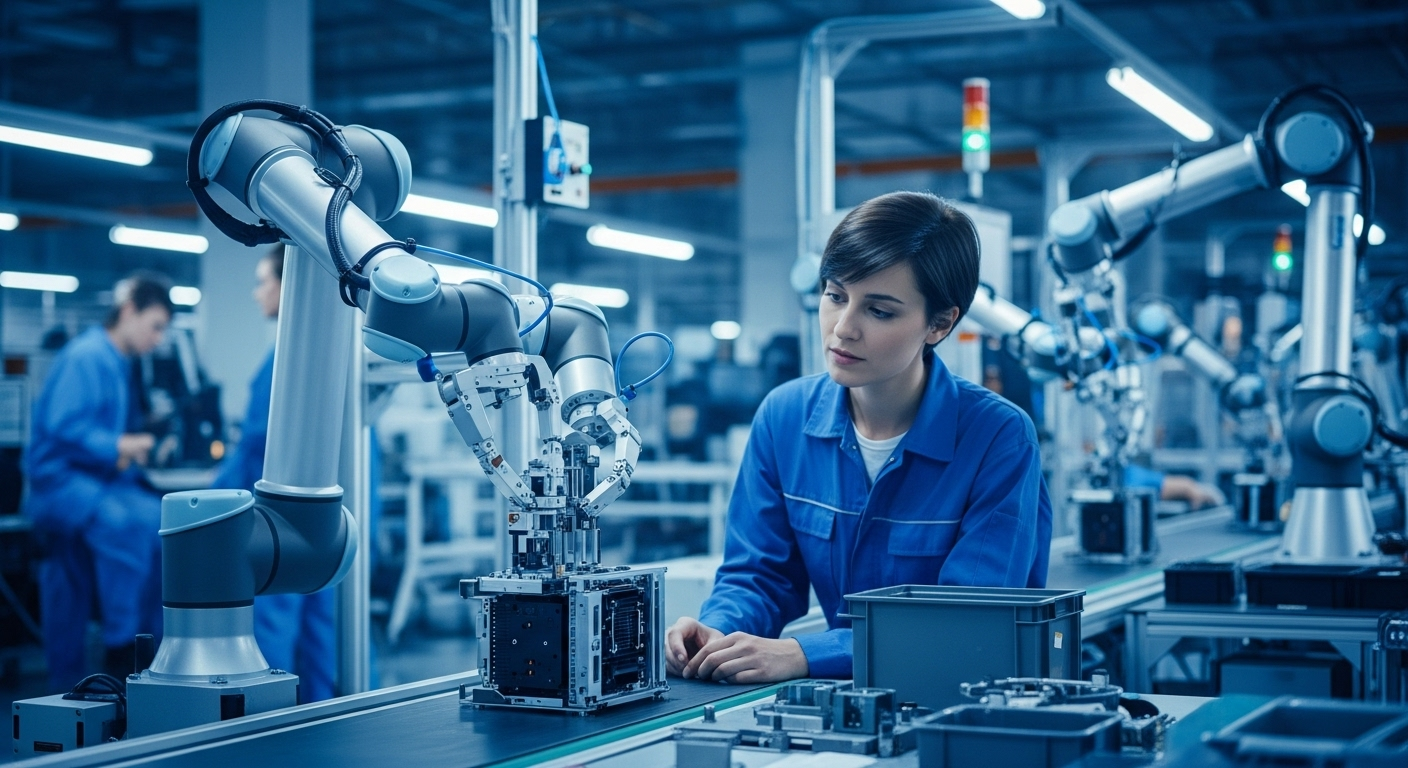Decoding the Potential of Cobots in Modern Business and Industrial Practices
Introduction: The rise of collaborative robots - or cobots - is redefining business and industrial operations. Their potential to work alongside human employees, enhancing efficiency and productivity, is an intriguing development that deserves a detailed exploration.

The Emergence of Cobots
Collaborative robots, popularly known as cobots, have been gradually gaining prominence since they first entered the market in the late 1990s. Unlike traditional industrial robots, cobots are designed to interact with humans in a shared workspace. Their inception was driven by a need for greater flexibility and efficiency in manufacturing processes, which conventional robots were unable to provide.
Current Trends in Cobot Application
Today, cobots are being deployed in various industries, from manufacturing and automotive to healthcare and retail. They are usually tasked with mundane, repetitive jobs, allowing human workers to focus on more complex and creative tasks. The cobot market is expected to grow exponentially in the coming years, driven by advancements in sensor technology and machine learning.
The Impact of Cobots on Business and Industry
The integration of cobots into business and industrial processes brings several benefits, including increased productivity, improved worker safety, and cost savings. However, it also presents challenges, such as the need for worker re-skilling and concerns about job displacement. Despite these issues, the net effect of cobot adoption is expected to be positive, contributing to the growth and competitiveness of businesses.
The Research Behind Cobots
Multiple studies have highlighted the efficiency of cobots in industrial settings. For instance, a study by the Massachusetts Institute of Technology found that teams of humans and cobots can be about 85% more productive than teams comprised of either humans or robots alone. Such research underscores the potential of cobots to revolutionize business and industrial operations.
Practical Insights
-
Cobots can be programmed to perform a variety of tasks, making them versatile tools for businesses.
-
Investing in cobots can lead to substantial cost savings over time, as they can work round-the-clock without breaks.
-
Employee training is crucial when integrating cobots into the workforce to ensure smooth operation and prevent mishaps.
-
Businesses should consider the ethical implications of cobot adoption, particularly in terms of job displacement.
In conclusion, cobots represent a significant leap in business and industrial practice, offering a host of benefits while also posing new challenges. As this technology continues to evolve, it will be interesting to see how businesses adapt and what new applications for cobots will emerge. Despite the challenges, the potential of cobots to enhance productivity and drive growth is undeniable, making them a compelling area for further exploration and investment.





